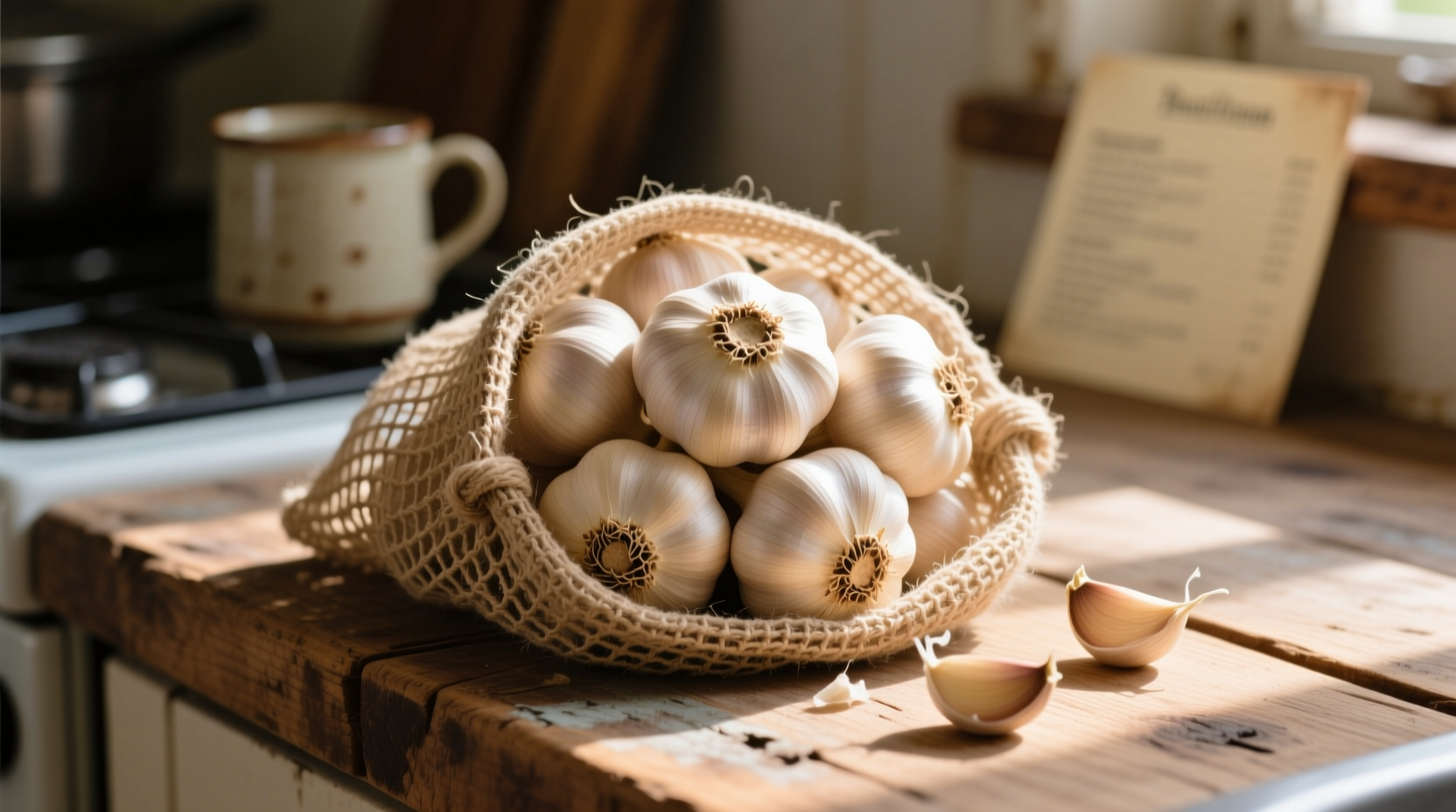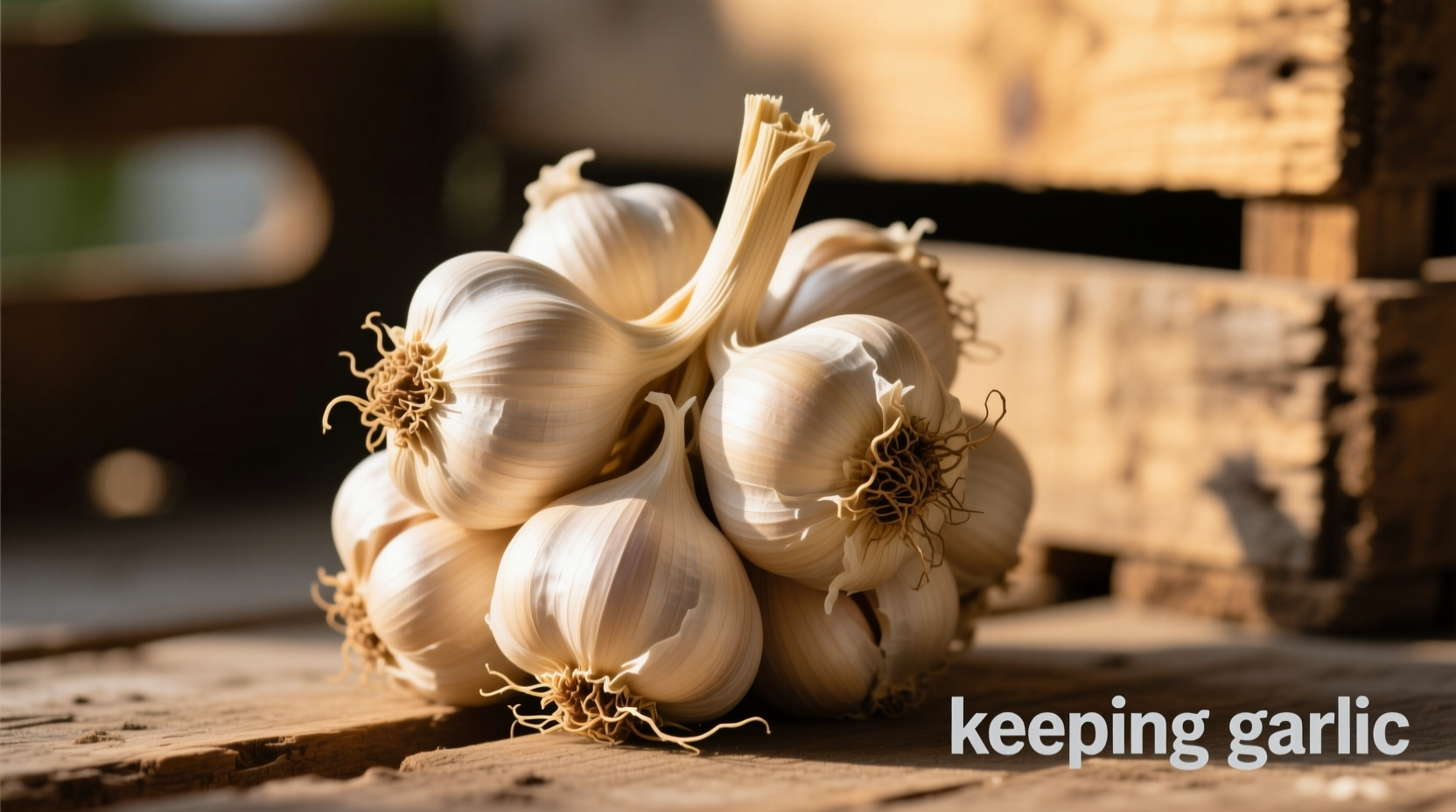The best way to keep garlic fresh is in a cool, dry, dark place with good air circulation, away from direct sunlight and moisture. Properly stored garlic maintains optimal flavor for 3-5 months at room temperature. Never store whole garlic bulbs in the refrigerator, as humidity causes premature sprouting and mold growth. For long-term preservation, freezing peeled cloves in oil preserves flavor for up to 12 months while maintaining culinary quality.
Garlic transforms ordinary dishes into extraordinary culinary experiences, but its shelf life presents a common kitchen challenge. Understanding proper garlic storage isn't just about preventing waste—it directly impacts flavor intensity, aroma development, and even food safety. As professional chefs know, improperly stored garlic loses its complex sulfur compounds that create that signature pungent yet sweet flavor profile when cooked.
Why Garlic Storage Matters More Than You Think
Garlic's unique chemistry makes proper storage critical. When stored incorrectly, garlic undergoes enzymatic changes that accelerate spoilage and diminish flavor compounds. The National Center for Home Food Preservation confirms that garlic stored above 60°F (15°C) with high humidity develops mold 47% faster than properly stored bulbs. This isn't just about freshness—improper storage can create conditions where Clostridium botulinum spores potentially activate in oil-stored garlic below 38°F (3°C).
Room Temperature Storage: The Gold Standard
For most households, room temperature storage delivers optimal results for whole, unpeeled garlic bulbs. This method preserves garlic's natural dormancy while maintaining flavor compounds.
| Storage Method | Temperature Range | Expected Shelf Life | Flavor Preservation |
|---|---|---|---|
| Mesh bag in dark pantry | 60-65°F (15-18°C) | 3-5 months | Excellent |
| Ceramic garlic keeper | 60-65°F (15-18°C) | 2-4 months | Very Good |
| Plastic bag in refrigerator | 34-40°F (1-4°C) | 1-2 weeks | Poor |
| Freezer (peeled cloves in oil) | 0°F (-18°C) | 10-12 months | Good |
Step-by-Step Room Temperature Storage
- Keep bulbs intact until ready to use (separated cloves spoil faster)
- Choose breathable containers like mesh bags, wire baskets, or ceramic keepers
- Maintain 60-65°F (15-18°C) temperature—avoid near stoves or ovens
- Ensure 50-70% humidity—too dry causes shriveling, too moist encourages mold
- Store away from onions which emit gases that accelerate garlic sprouting

Refrigeration: When and How to Use It
While generally discouraged for whole bulbs, refrigeration serves specific purposes. The UC Davis Postharvest Technology Center recommends refrigeration only for:
- Peeled individual cloves (store in airtight container for 7-10 days)
- Partially used bulbs showing early sprouting signs
- Preserving garlic in vinegar for pickling (acidic environment prevents botulism)
Never refrigerate whole, unpeeled bulbs—the humidity triggers premature sprouting. If using refrigerator storage, place cloves in a paper towel-lined container to absorb excess moisture, then cover with a breathable lid.
Freezing Garlic for Long-Term Preservation
Freezing properly prepared garlic maintains flavor integrity for extended periods. Professional chefs use these three methods depending on intended use:
Method 1: Whole Peeled Cloves
Peel cloves, spread on parchment paper, freeze solid (2 hours), then transfer to airtight freezer bags. Use directly in cooking without thawing. Lasts 10-12 months.
Method 2: Minced Garlic in Oil
Finely mince garlic, mix with olive oil (1:1 ratio), freeze in ice cube trays, then transfer cubes to freezer bags. The oil prevents freezer burn and provides ready-to-use portions. Lasts 8-10 months. Important: Always freeze garlic-in-oil mixtures—never store at room temperature due to botulism risk.
Method 3: Roasted Garlic Freezing
Roast whole heads, squeeze out softened cloves, freeze in portions. Ideal for sauces and spreads. Lasts 6-8 months.
Recognizing Spoilage: Safety First
Knowing when garlic has spoiled prevents foodborne illness. The USDA Food Safety and Inspection Service identifies these critical warning signs:
- Mold growth: Fuzzy white, green, or black spots indicate spoilage
- Soft spots: Mushy areas signal internal decay
- Sprouting: Green sprouts are edible but indicate aging—use immediately
- Off odors: Sour or ammonia-like smells mean discard immediately
Green discoloration in cooked garlic (common when using baking soda) is harmless, but green sprouts in raw garlic indicate reduced flavor intensity. Never consume garlic with visible mold or slimy texture.
Special Considerations for Different Garlic Types
Not all garlic varieties store equally. Understanding these differences optimizes preservation:
- Softneck varieties (California White, Inchelium Red): Store 8-10 months at room temperature—ideal for braiding
- Hardneck varieties (Rocambole, Porcelain): Store 4-6 months—separate from softnecks as they have different humidity needs
- Elephant garlic: Technically a leek—stores only 2-3 months with milder flavor
- Green garlic (spring variety): Treat like scallions—refrigerate and use within 1 week
Common Storage Mistakes That Ruin Garlic
Avoid these frequent errors that compromise garlic quality:
- Storing in plastic bags: Traps moisture causing mold—use breathable containers instead
- Keeping near heat sources: Accelerates sprouting—maintain consistent cool temperature
- Washing before storage: Introduces moisture—clean only before use
- Storing with potatoes: Both emit gases that accelerate each other's spoilage
- Refrigerating whole bulbs: Causes premature sprouting in most varieties











 浙公网安备
33010002000092号
浙公网安备
33010002000092号 浙B2-20120091-4
浙B2-20120091-4